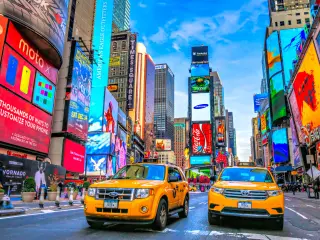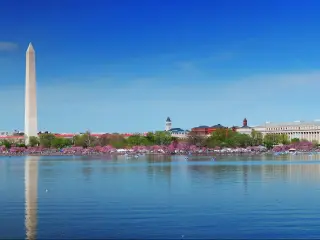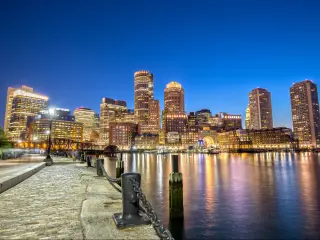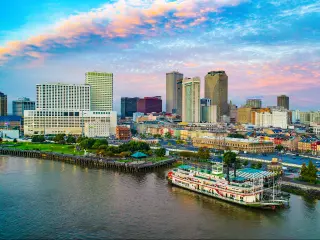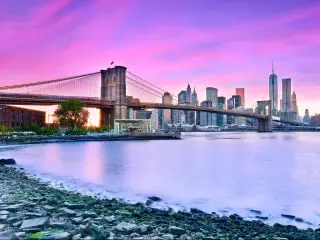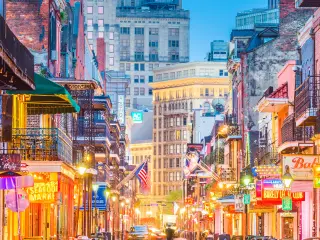Is Washington DC Walkable: Our Guide to Exploring the City without a Car
Located in the Eastern United States and looking out over the Potomac and Anacostia Rivers, Washington DC is the perfect destination for anyone who wants to dive into the nation's history or get a close-up view of some of the most famous monuments in the United States.
Washington DC is a really walkable city that you can easily explore without a car. You'll visit the world-class Smithsonian Museums, the Lincoln Memorial, the Vietnam Veterans Memorial, the Washington Monument, and of course the White House.
Even in a short visit to the capital of the United States, you can hop between the vast open space of the National Mall, iconic views of the White House, the modern Downtown cityscape, and the cobbled back streets of historic Georgetown.
Is Washington DC walkable?
Washington DC is a very walkable city, with plenty of top-rated sights to see in a small area. Pack comfortable shoes as you'll be walking several miles during your trip!
The city covers 68 square miles (including 7 square miles of water) and has a population of around 700,000, so even counting the outer areas, it's not as big as many major cities.
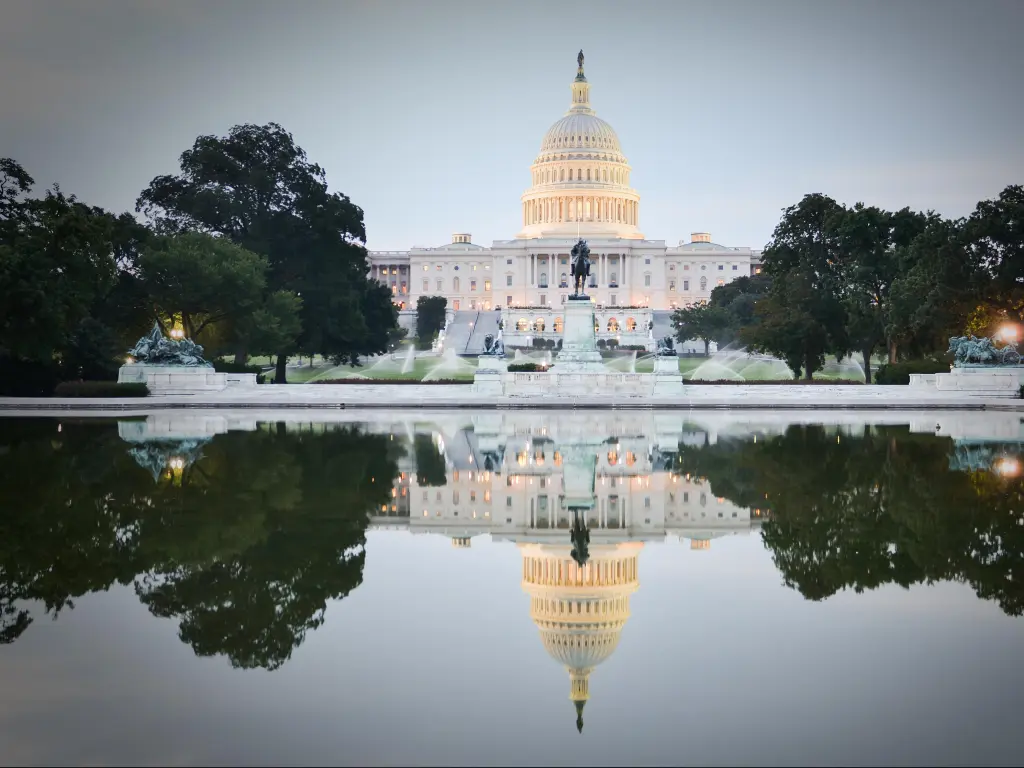
Be realistic about how far you plan to walk though, especially if your itinerary for the day includes visiting some of the city's museums. They can add thousands of extra steps to your day and you'll want to leave enough time to appreciate the world-class displays.
Washington DC is surrounded by a much larger metropolitan area stretching to nearby Arlington and Alexandria so you might want to use a car or taxi if you're heading out to other sights like Arlington Cemetery, the Pentagon (US citizens only) or the National Air and Space Museum's Virginia site.
To explore the city on foot you might prefer to visit in spring or fall to enjoy the best weather. DC experiences cold, wet and sometimes snowy winters and hot, extremely humid summers. It's notorious for quick changes in conditions too.
Best walking itinerary in Washington DC
We've put together a 2-day walking itinerary that takes you to the city's most popular sights and attractions. You'll see some of the most important buildings of the state - you can even take a free tour of some, but advance booking is essential!
We suggest choosing one or two of the Smithsonian Museums rather than trying to see them all, but as they're mostly close together that won't affect your walking route.
You'll see the Washington Monument and Lincoln Memorial at a distance on Day 1, but we'd recommend making an early start on your second day so that you can appreciate them before the crowds build up!
Day 1 Itinerary: Capitol Hill, Downtown and Georgetown
| Activity | What you'll be doing | |
|---|---|---|
| 1 | Arrival | Drive to Capitol Hill |
| 2 | Park | Park your car at Union Station Parking Garage |
| 3 | Visit | Take a free tour of the United States Capitol |
| 4 | Visit | Explore the Library of Congress |
| 5 | Visit | Spend some time at the United States Botanic Garden |
| 6 | Walk | Stroll along the National Mall to Smithsonian Museums |
| 7 | See | View the exterior of The White House |
| 8 | Lunch | Enjoy a bite at the Founding Fathers |
| 9 | Walk | Walk or take Bus 33/38B from 1 St NW to Georgetown |
| 10 | See | See The Old Stone House |
| 11 | Shop | Enjoy some retail therapy on M Street |
| 12 | Visit | Optional: Head to the Dumbarton Oaks Museum |
| 13 | Walk | Stroll through the Oak Hill Cemetery |
| 14 | Explore | Spend some time exploring Georgetown Historic District |
| 15 | Check-in | Check into The Fairmont Washington DC |
| 16 | Dinner | Enjoy a meal at Blue Duck Tavern |
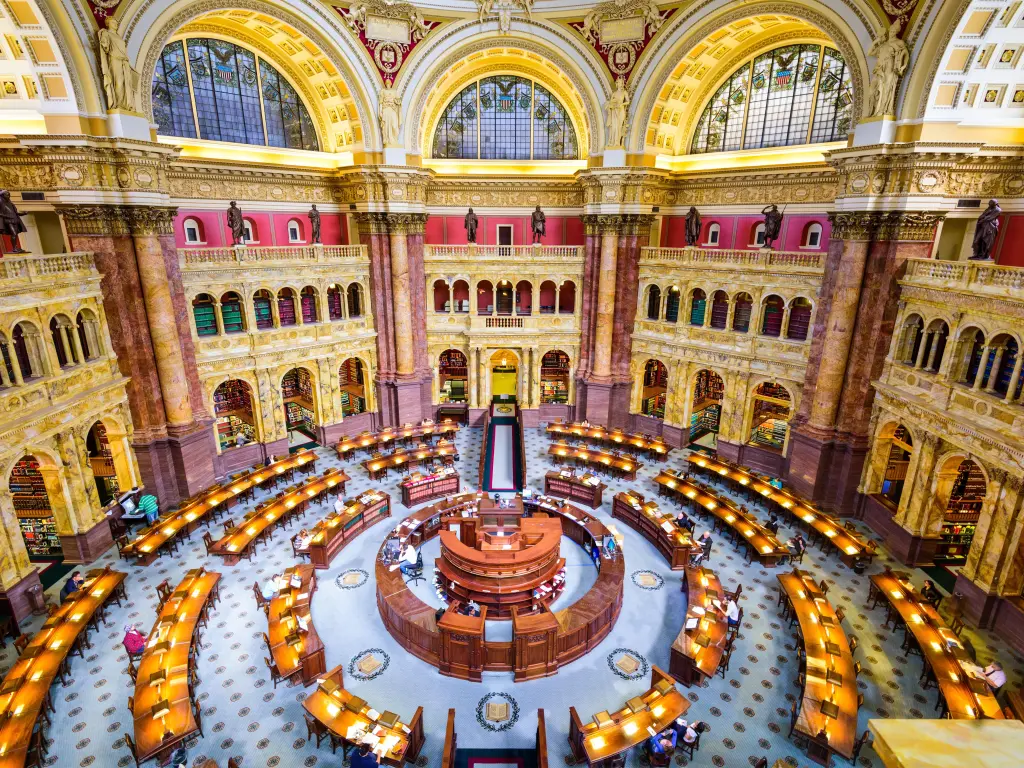
Day 2 Itinerary: The Tidal Basin and National Mall
| Activity | What you'll be doing | |
|---|---|---|
| 17 | Breakfast | Enjoy an early meal at Bluestone Lane West End Café |
| 18 | Walk | Walk (or take a bus) to the Vietnam Veterans Memorial |
| 19 | Visit | Visit Lincoln Memorial and Washington Monument |
| 20 | Walk | Walk around the Tidal Basin |
| 21 | Visit | Enjoy spending time at International Spy Museum |
| 22 | Lunch | Have a meal at Rice Bar |
| 23 | Departure | Take the Metro from L'Enfant Plaza to your car |
What makes Washington DC walkable?
As you've already read, Washington DC is a relatively compact city with most of the main attractions located in a few nearby neighborhoods. That means you'll never have to walk too far before you arrive at the next destination on your DC walking itinerary.
It's a manageable 4.5 miles to walk directly from Georgetown in the west and Navy Yard in the east, with plenty to see along the way.
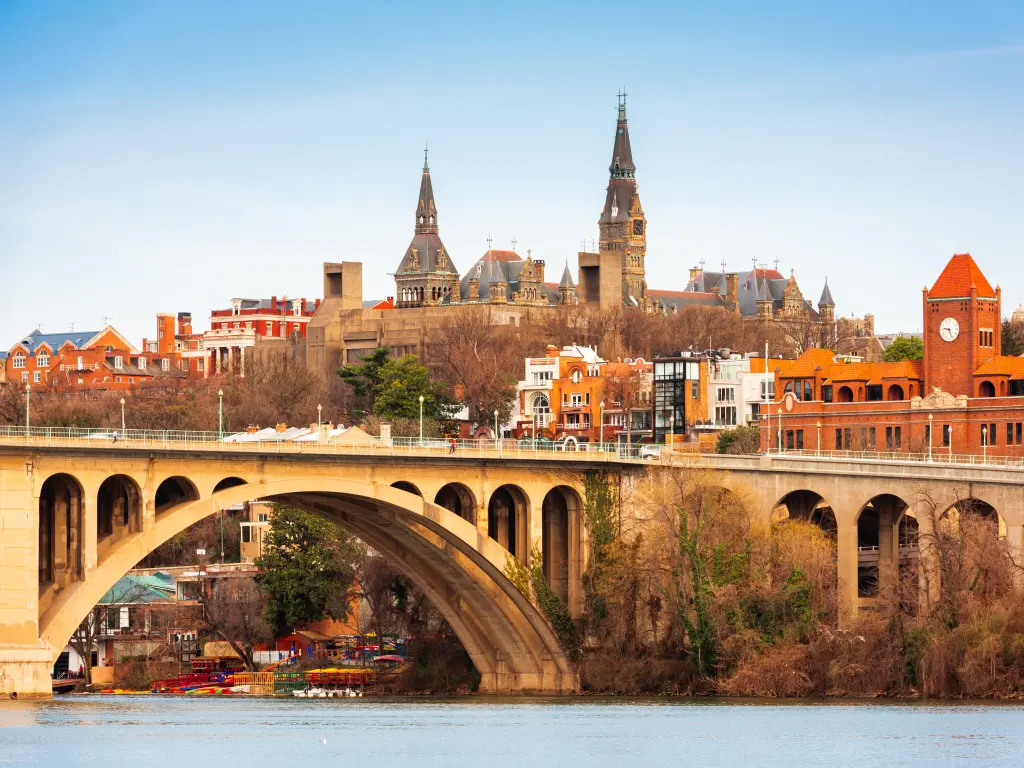
Our 2-day walking itinerary takes you further than this so that you can see as many of the sights as possible, but the DC Metro has frequent stops through the center of the city if you need to rest your feet.
As an added bonus, much of the city is flat since Washington DC is built around a flood plain and along the riverfront. There are some gentle but manageable inclines though, especially if you're heading into Georgetown or NoMa.
Most walkable areas in Washington DC
Washington DC is divided into 8 administrative wards and each contains several distinct neighborhoods. The city's neighborhoods can have very different looks and feel; some are defined by nationally recognized museums and monuments.
Each of DC's neighborhoods are relatively small. The largest is Capitol Hill – it will take around 30 minutes to walk from the northwest to southeast corners of this part of the city.
Most of the main tourist attractions are in Capitol Hill, Federal Triangle, Georgetown, and Downtown, which are all in Ward 2 and Ward 6. Other neighborhoods that you might like to visit on your trip include Chinatown, Dupont Circle, Foggy Bottom, NoMa, Logan Circle and U Street.
Another popular neighborhood is Navy Yard, which runs along the Anacostia River.
The city's tourist areas are all close together, so walking between neighborhoods is possible. That means you can visit several parts of the city on foot, even if you're only in DC for a short trip.
Public transport options in Washington DC
If you're planning a totally car-free trip to the East Coast, it's relatively straightforward to reach Washington DC using public transport. Trains arrive at the spectacular Union Station from New York, Boston, Philadelphia, Baltimore and Richmond, as well as destinations further afield if you have time to sit back and enjoy a longer journey.
Once you've arrived, Washington DC has six metro lines that can help you to zip around the city if you need a break from exploring on foot. To use the metro, download the SmarTrip app or buy a rechargeable SmarTrip card at a Metro station.
The Blue, Silver, and Orange lines run east to west across the city, taking you between Foggy Bottom and Capitol Hill via the White House, the Lincoln Memorial, and the National Mall.
You'll connect with the Red Line to take the metro to Dupont Circle or NoMa, while the Green Line runs south from U Street to Navy Yard, also traveling across the National Mall.
Alternatively, the DC Circulator is an affordable bus service that connects many of the neighborhoods you're likely to be visiting. The National Mall Route is particularly helpful if you want to rest your feet between attractions, while the Georgetown Route is attractive since there's no Metro to this part of DC. Fares are currently $1 per trip.
If you want to take a trip to other parts of the city, Metrobus runs 24-hour services throughout the city. There are also rental bikes at hundreds of pick-up points around the city.
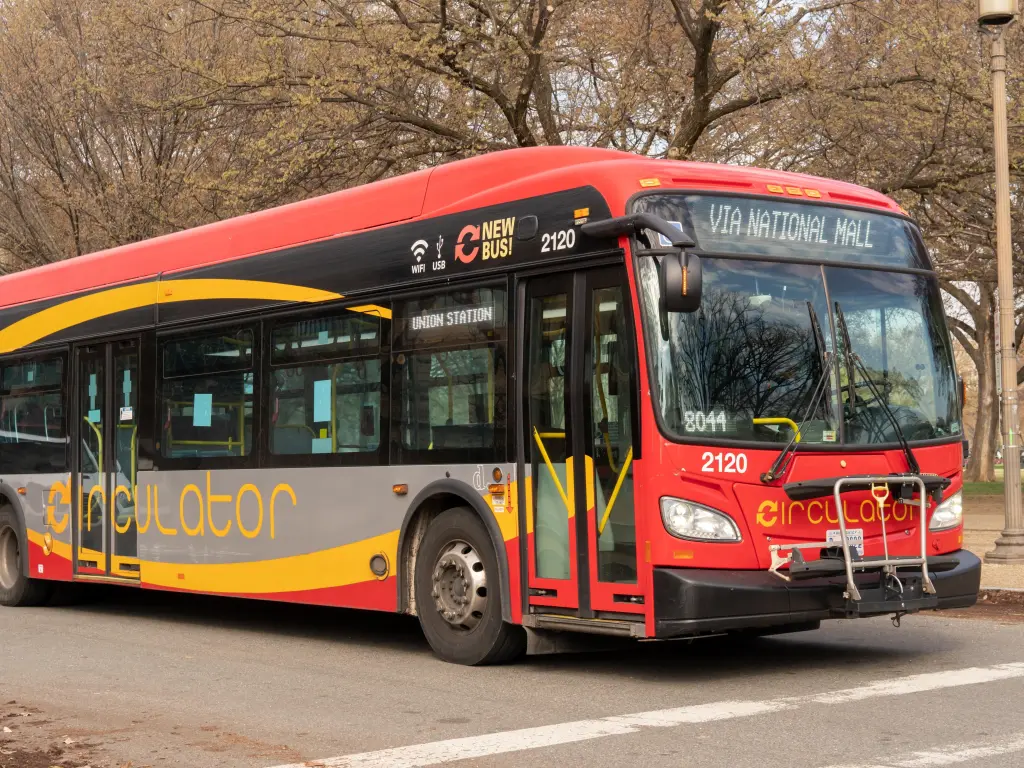
Parking in Washington DC
Parking in Washington DC is a little easier to find and a little more affordable than many major cities, but it still pays to plan ahead to take the hassle out of searching for a space when you arrive.
There are large parking garages at Union Station, the Reagan Building and CityCenterDC, which are particularly convenient for visitors from out of town. Remember to check out the entrance and exit times if you're arriving or leaving late at night.
Union Station Garage offers special rates for stays up to 48 or 72 hours (currently $50/$72, calculated at the time of writing), which makes it a relatively affordable option, but otherwise, expect to pay $30 to $35 for overnight parking.
You'll also notice paid on-street parking throughout Washington DC, and if you're arriving outside of rush hour then you'll often be able to find a short-stay space.
The hourly rate for on-street is currently $2.30 across the city center, except on Sundays when parking is free., Rules and restrictions vary considerably, though, so always double-check before leaving your car.
Is Washington DC safe to walk around?
Across Washington DC, as a whole, the crime rate is higher than average, but if you stick to tourist areas, you're not likely to encounter problems.
Mugging and pickpocketing are the two main risks for visitors, so avoid walking in unlit or uncrowded areas at night and keep your belongings where you can see them.
Don't leave possessions on show in your vehicle, and stick to one of the well-known parking garages to reduce the risk of vehicle theft, especially if you're leaving your vehicle overnight.
You might be hassled to buy small souvenirs at inflated prices on the National Mall and in other tourist areas – avoid eye contact and keep walking if you're approached by a vendor you don't want to buy from.
Things you need to know about walking in Washington DC
As we've already mentioned, Washington DC is a fairly compact city where many of the main attractions are located close together.
Don't try to fit in too many of the sights, though - you could easily spend your whole trip in the Smithsonian Museums, which won't leave time for walking through other parts of the city!
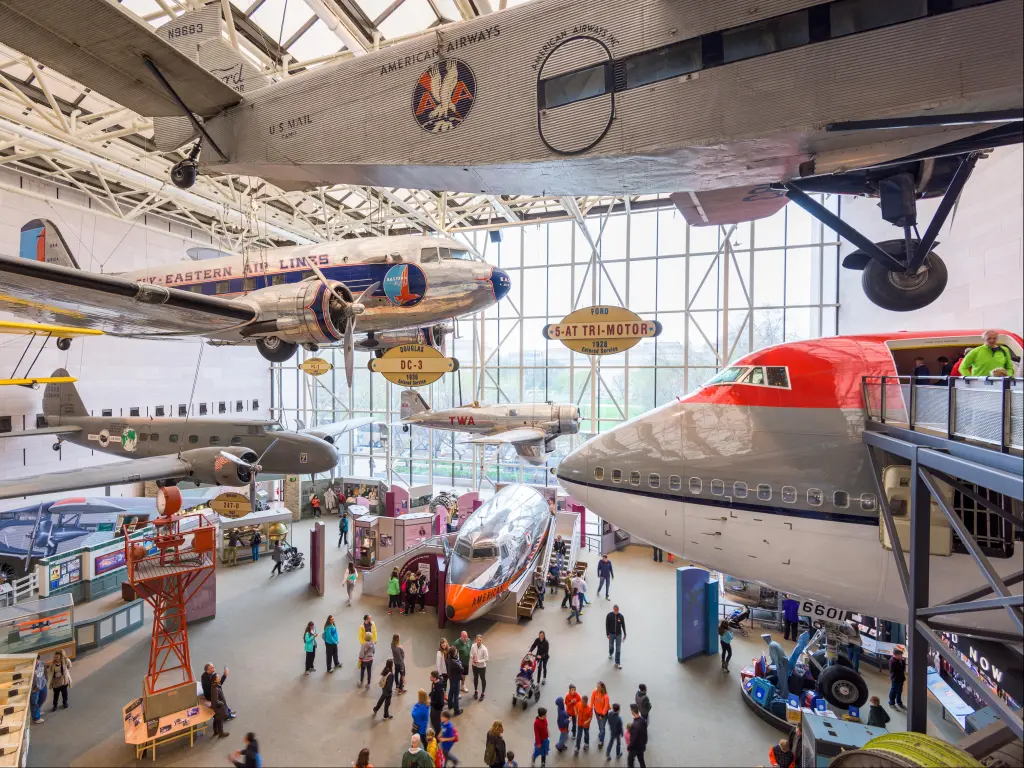
The city's major monuments and the Smithsonian Museums are wheelchair accessible, and you can also borrow a manual wheelchair when you're visiting the Smithsonian Museums. Other accessibility support is available too, but advance booking is recommended.
With many wide sidewalks and plenty of open space between the monuments, many parts of DC are easy to move around. However, winter weather can make sidewalks slippery, and in older parts of the city, for example, Georgetown, sidewalks can be narrower and can feel crowded at peak times.
Buses have ramps and spaces for wheelchairs and should also have audio announcements for each stop.
All Metro stations now have elevators as well as escalators, though they're often only located at one entrance and unfortunately outages are common.
You can use the ELstat app for real-time updates on elevator service to help your trip run smoothly, and if elevator issues mean you can't exit at your planned station, you can also request a shuttle back from the next available station.
Things to see in Washington DC
If you're spending a little longer in Washington DC then you'll have time to visit other parts of the city or to spend time in more of the Smithsonian Museums which run all along the National Mall.
Around National Mall
- United States Holocaust Museum - This solemn museum in Washington DC offers an in-depth look at the Holocaust through artifacts, personal stories, and multimedia displays, aiming to educate visitors about the dangers of hatred.
- National Museum of American History - Showcasing the rich tapestry of American history, this museum features a vast collection of artifacts ranging from the original Star-Spangled Banner to Abraham Lincoln's top hat.
- National Museum of the American Indian - Celebrating the diverse cultures and histories of Native Americans, this museum presents an array of exhibits, performances, and educational programs, highlighting the art, history, and traditions of indigenous peoples across the Western Hemisphere.
- National Museum of African American History and Culture - This museum, dedicated to African American life, history, and culture, features powerful exhibits that span from the era of slavery to the civil rights movement and beyond.
- Hirshhorn Museum and Sculpture Gallery - As a leading voice for contemporary art and culture in Washington DC, the Hirshhorn offers an extensive collection of modern and contemporary art, including a renowned sculpture garden.
- National Museum of Asian Art - This museum showcases an exquisite collection of Asian art, ranging from ancient sculptures to contemporary pieces, representing thousands of years of Asian history and culture.
- National Museum of African Art - Offering a window into the rich artistic heritage of Africa, this museum features an extensive collection of African art, including both traditional and contemporary works from across the continent.
- The National Archives Museum - Home to the original U.S. Constitution, Bill of Rights, and Declaration of Independence, this museum provides an up-close view of these foundational documents, along with exhibits on American history.
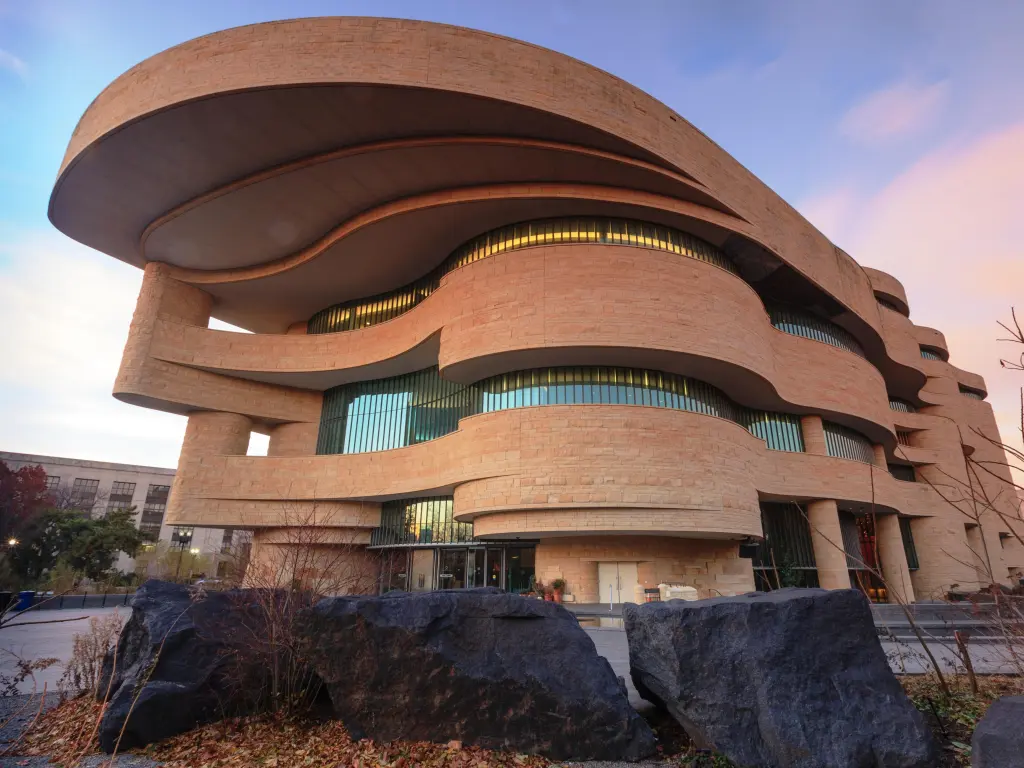
Dupont Circle
- Dupont Circle Fountain - An iconic landmark in Washington DC, the Dupont Circle Fountain is a historic and artistically crafted fountain, serving as a social and cultural gathering spot in the heart of the city.
- Embassy Row - Stroll along Embassy Row to witness a variety of grand embassies and historic buildings, showcasing architectural styles from around the world and representing the diplomatic heart of Washington DC.
- Connecticut Avenue - Connecticut Avenue is a vibrant shopping district in Washington DC, offering a mix of unique boutiques, national retailers, and a variety of dining options.
- The Phillips Collection - This modern art museum, located in Washington DC, is renowned for its intimate setting and exceptional collection of impressionist and modern American and European art.
- Anderson House - A magnificent historic mansion and museum in Washington DC, Anderson House offers a glimpse into the city's elite society of the past through its opulent architecture and decorative arts.
- Woodrow Wilson House - The former home of America's 28th president, Woodrow Wilson, this historic site in Washington DC is preserved as a museum showcasing his life and times.
- Heurich House Museum - Also known as the Brewmaster's Castle, this ornate, late-Victorian mansion in Washington DC serves as a museum, offering insight into the life and times of Christian Heurich, a prominent local brewer.
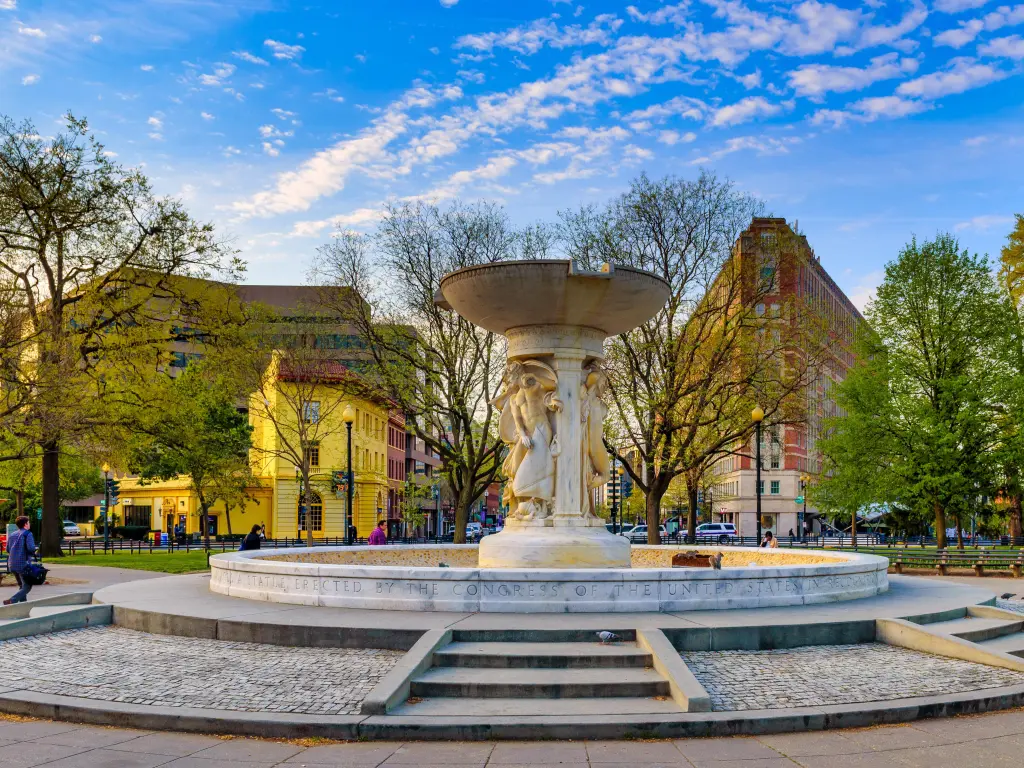
NoMa
- Union Market - A vibrant and bustling marketplace in Washington DC, Union Market is known for its wide array of artisanal food stalls, restaurants, and unique shops.
- Union Station - An iconic landmark in Washington DC, Union Station is not only a major transportation hub but also a shopping and dining destination, boasting stunning Beaux-Arts architecture.
- National Postal Museum - This unique museum in Washington DC delves into the history of the American postal system, featuring interactive exhibits, rare stamps, and a look at the evolution of mail delivery.
- Visit a Distillery - Washington DC hosts several distilleries offering tours and tastings, where visitors can learn about the craft of distilling and sample locally produced spirits.
- Metropolitan Branch Trail - For outdoor enthusiasts, this multi-use trail in Washington DC provides a scenic route for walking or biking, connecting various neighborhoods and offering a different perspective of the city.
Whether you're visiting Washington DC for a weekend of a week, there's plenty to keep you busy. Even better, you don't need a car to see all the sights the city has to offer!

